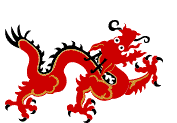During the Vietnam War, the defense of
Air Bases mirrored the conflict itself: There was no rear echelon once
the entire country became a battlefield. Air Bases relatively,
unaffected by ground forces in past wars, were no longer considered safe
havens. They, too, suffered from costly ground assaults and mortar shelling.
An advanced party of the 6010 TAC Group arrived at Don Muang RTAFB at the request of the Royal Thai government to establish an aircraft warning system in April, 1961. Four RF-101C aircraft of the 45th TRS and their photo lab arrived in November of 1961 to fly RECCE flights over Laos.In November of 1962 the 2nd Air Division assumed control of the 6010th TAC Group. In August the group was redesignated the 35TH TAC GROUP. In July 1965 the 35th TAC Group was redesignated the 6236th Combat Support Group and again in April, 1966 was redesignated the 631st CSG. In March of 1965 there were 1342 enlisted men stationed at Don Muang RTAFB. The primary mission of Don Muang was to provide support for all USAF units and detachments assigned to the base or other bases in Thailand. Don Muang was Thailand's international airport, served by PAA, Swiss Air, Lufthansa among others. Don Muang was also a training base for the RTAF. More important was Bangkok’s harbor, a deep water SEATO port. Up through 1966 many of the USAF logistics requirements flowed through this port to upcountry bases transported by Don Muang's Transport Units. Most operations moved out of Don Muang in 1970 to other Thailand bases. Above from USAF History in Thailand Contributors David F. Adams Bill Cummings Lt. Col John Probst Ronald Reid Terry Stricklan
|


